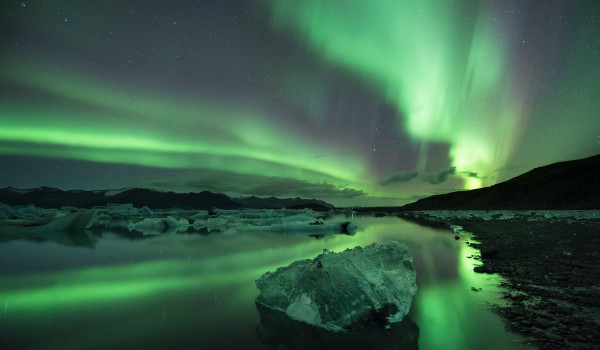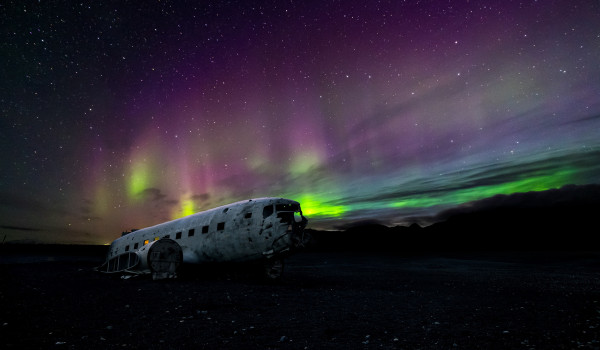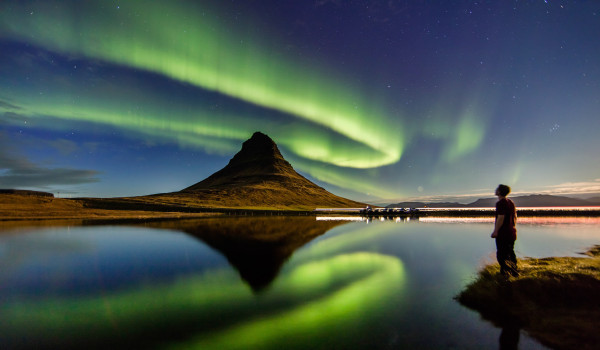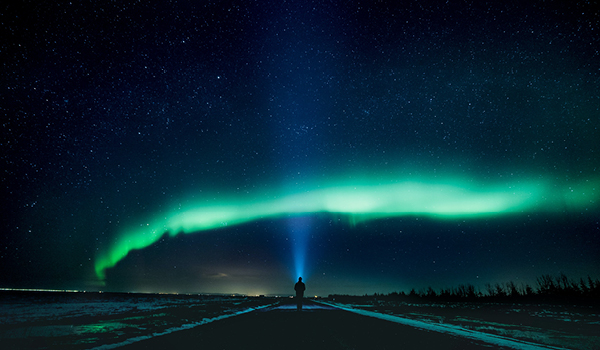Northern Lights
Magical Northern Lights Tours in Iceland
Experience the wonder of the Northern Lights with our carefully planned tours, designed to bring you closer to one of nature's most stunning displays. The Northern Lights, also known as the Aurora Borealis, offer a mesmerizing view as colorful lights dance across the night sky. Whether you’re looking for adventure or simply want to witness this beautiful phenomenon, our tours take you to some of the best locations. Join us for a relaxed, memorable journey to see the Northern Lights in all their glory.
What Are the Northern Lights?
The Northern Lights, also known as the Aurora Borealis, are a natural light display that occurs in the Earth's polar regions. This breathtaking phenomenon is caused by the interaction between solar particles and the Earth’s magnetic field.
When charged particles from the sun collide with atoms in the Earth's atmosphere, they emit light, creating the vivid colors—typically greens, pinks, and purples—that we see dancing across the night sky. The Northern Lights have fascinated people for centuries, not only for their beauty but also for the mystery surrounding their appearance.

Best Time to See the Northern Lights
To maximize your chances of witnessing the Northern Lights, timing is key. The best period to see them is from late August to early April, when the nights are longest and darkest. Within this window, the peak months are typically November through February. These months offer the longest, darkest nights, which are ideal for viewing the auroras. However, September and March are also excellent times to visit, as they offer a balance of long nights and milder weather conditions.
Why Tours Are Recommended
While it's possible to chase the Northern Lights on your own, joining a guided tour is highly recommended. Local guides bring a wealth of experience in predicting aurora activity and navigating Iceland’s sometimes unpredictable weather.
They know the best, most remote locations to escape light pollution and offer the clearest views of the sky. Additionally, tours often provide safety and comfort, ensuring that your experience is both enjoyable and secure. Many tours also include an educational component, where guides share fascinating insights about the science and lore behind the Northern Lights.

The Ideal Conditions to See the Northern Lights
Several factors influence your chances of seeing the Northern Lights:
Dark Skies: The Northern Lights are best seen under a dark sky, far from city lights. Light pollution can significantly diminish the visibility of the auroras, so it's important to find a remote, dark location.
Clear Skies: Cloud cover can obstruct your view of the Northern Lights. Even if aurora activity is high, heavy clouds can completely block the display. It's crucial to monitor weather forecasts and choose nights when the sky is expected to be clear.
High Solar Activity: The intensity of the Northern Lights is closely tied to solar activity, including solar flares and coronal mass ejections. These events release charged particles that enhance the aurora's brightness and visibility. Keeping an eye on aurora forecasts, which predict solar activity, can help you plan your viewing.

Iceland’s Prime Location in the Auroral Zone
Iceland is one of the best places in the world to see the Northern Lights due to its location within the Auroral Zone, a region around the Earth’s magnetic poles where auroral activity is most intense. This zone is where geomagnetic storms, which cause the Northern Lights, primarily occur.
The strength and visibility of the Northern Lights are influenced by the Kp index, which measures geomagnetic activity on a scale from 0 to 9. Iceland's latitude, falling within the optimal range of 66°N to 69°N, ensures frequent sightings, even during low Kp ratings. This means that even when geomagnetic activity is minimal, there is still a chance to see the Northern Lights in Iceland.
Iceland's location within the Auroral Zone gives it a unique advantage, allowing for more frequent and intense auroral displays. The country's high latitude means the Northern Lights are often visible for more than half the year, making Iceland a prime destination for aurora enthusiasts.

High Solar Activity
Solar activity plays a crucial role in the visibility of the Northern Lights. Events like solar flares and coronal mass ejections release charged particles that interact with the Earth's atmosphere, creating the auroras. While predicting solar activity with precision is challenging, tools and forecasts are available to help enthusiasts plan their trips around periods of high solar activity, thereby increasing their chances of witnessing the Northern Lights.
Importance of a Dark Sky
To fully appreciate the Northern Lights, viewing them under a dark sky is essential. The brightness of the auroras can be washed out by city lights or a bright moon, so it’s important to find a remote location with minimal light pollution. The contrast provided by a dark sky enhances the vibrancy and detail of the auroral display, making the experience even more spectacular.
The Need for Clear Skies
Clear skies are another crucial factor in seeing the Northern Lights. While some light cloud cover might not completely obscure the auroras, heavy clouds can block them entirely. Using aurora forecast tools that include cloud cover predictions can help you choose the best nights for viewing.
Choosing a Suitable Viewing Point
The location from which you view the Northern Lights is just as important as the time you choose to see them. Ideal spots are usually flat and elevated, providing an unobstructed view of the horizon. It’s important to avoid areas where mountains, trees, or buildings might block your view. Safety is also a priority—always choose a designated parking area or viewpoint, and avoid stopping on roadsides.
Timing Your Visit: Best Months for Northern Lights in Iceland
The best months to see the Northern Lights in Iceland are from late August to early April. During these months, the nights are sufficiently long and dark, with the peak viewing season occurring between November and February. However, the transitional months of September and March are often ideal, offering clearer skies and more moderate weather. While December and January offer the longest nights, they also come with the challenge of more severe winter weather, which can include storms and heavy cloud cover.
Maximizing Your Chances of Witnessing the Aurora Borealis in Iceland
To maximize your chances of seeing the Northern Lights in Iceland, plan your visit during the prime seasons of autumn, winter, or early spring. Focus on the key factors: location, timing, weather conditions, and solar activity. While these elements increase your odds, a bit of luck is always involved.

Why Consider a Guided Aurora Tour?
Joining a guided tour offers several advantages for those seeking the Northern Lights:
Forecast Expertise: Local guides have a deep understanding of aurora forecasts and can interpret them accurately to increase your chances of a successful sighting.
Optimal Location: Guides know the best spots away from city lights and have the knowledge to navigate to these locations safely and quickly.
Safety First: Iceland’s weather can be unpredictable, and guided tours ensure that your safety is a top priority.
Educational Experience: Guided tours often include educational insights about the Northern Lights, adding depth to your experience.
Rebooking Opportunities: Many tours offer a rebooking policy if the Northern Lights aren’t visible on your first attempt, allowing you another chance without additional costs.
While Mother Nature ultimately decides whether the Northern Lights will appear, a guided tour can significantly enhance your experience, making it safer, more informative, and more likely to result in a successful sighting.